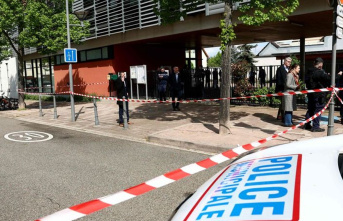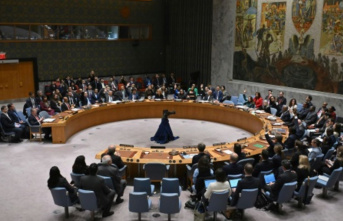When Mario Molina was awarded the Nobel Prize in October 1995, the chemist could hardly believe it. "I am completely surprised and delighted that our field of work has been recognized," he said at the time. Environmental research has so far played a subordinate role in the awarding of the Nobel Prizes. His discovery may have saved humanity from catastrophe.
The then 52-year-old Molina was honored together with his colleagues, the Dutchman Paul Crutzen from the Max Planck Institute and the US researcher Frank Sherwood Rowland for research into the destruction of the ozone layer. The researchers discovered how sensitive the ozone layer is to air pollution. They realized that the chlorofluorocarbons (CFCs) used as propellants destroy the earth's ozone layer as soon as they reach the upper atmosphere and are destroyed there by solar radiation.
As early as 1974, Molina and Rowland caused a stir when they published their results in the journal "Nature" and reported on the danger from spray cans and refrigerators. They decided to communicate the issue not only to other scientists, but also to policy makers and the media. "We realized that this was the only way to ensure that society would take action to alleviate the problem," Molina later explained.
Their work led to the 1987 Montreal Protocol, a landmark international environmental agreement to phase out the production of ozone-depleting gases. According to the scientists, without the warning and the protocol, the production of harmful gases would have continued to increase unabated.
Mario Molina discovered his passion for science as a child. "I still remember my excitement when I first looked at paramecia and amoebas through a rather primitive toy microscope," he recalled in his memoirs. He converted his parents' bathroom into a laboratory. He would then spend hours playing with chemistry sets.
Born on March 19, 1943 in Mexico City to a judge and a housewife, according to family tradition, his parents sent him to a boarding school in Switzerland at the age of eleven, "assuming that German was an important language for a budding chemist that he has to learn," says Molina.
Although he could have imagined a career as a musician, since he was particularly fond of playing the violin, he later decided to devote himself entirely to science. In 1960 he enrolled at the National Autonomous University of Mexico to study chemical engineering. After studying in Paris and Germany, he began postgraduate studies at the University of California, Berkeley in 1968. There he received his doctorate in physical chemistry in 1972.
In 1973 he joined the laboratory group of Dr. Rowland at the University of California at Irvine, where they developed their theory of ozone depletion. In the same year he married the chemist Luisa Tan, with whom he had a son and from whom he divorced in 2005. He later worked at the Jet Propulsion Laboratory in Pasadena, California, at the University of California, San Diego, and at the Massachusetts Institute of Technology.
In November 1999, Molina was awarded the UN Environment Prize for his ozone research. In 2006 he remarried. During Barack Obama's US presidency, Molina was a member of his Advisory Council on Science and Technology. Obama awarded the scientist the Presidential Medal of Freedom in 2013. Molina died of a heart attack in October 2020 at the age of 77. On the occasion of his birthday this Sunday, Google dedicated a doodle to him.
Watch the video: The ozone layer protects life on earth from the high-energy UV radiation of sunlight. In 2019, she appeared to have recovered. Now the ozone hole is frighteningly large again.
Sources: nobelprize.org, The New York Times, DPA











